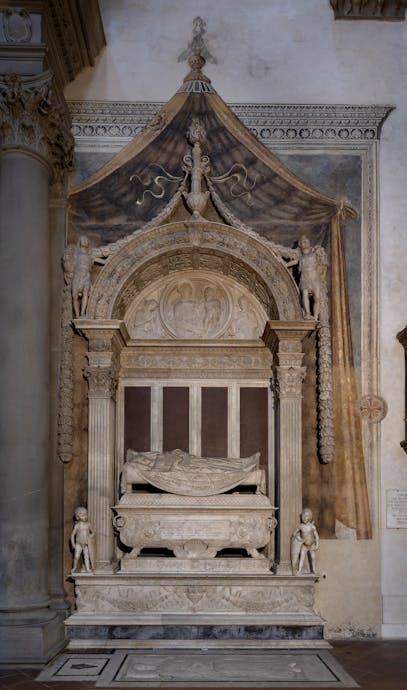Bravo!
Now you have found the treasure, find out more about the artworks
Animal and bizarre creatures
A
Bernardo Rossellino carved the Monumental tomb of Leonardo Bruni, a chancellor of the Florentine Republic, between 1445 and 1450. The tomb stands in the basilica’s south aisle. This was the work of art that set the standard for monumental tombs typical of the Florentine Renaissance, i.e. tombs usually set vertically against the wall of a church. The overall effect is often pretty impressive because the aim was to honour the memory of illustrious figures, whose qualities and talents are illustrated with inscriptions and decorations.
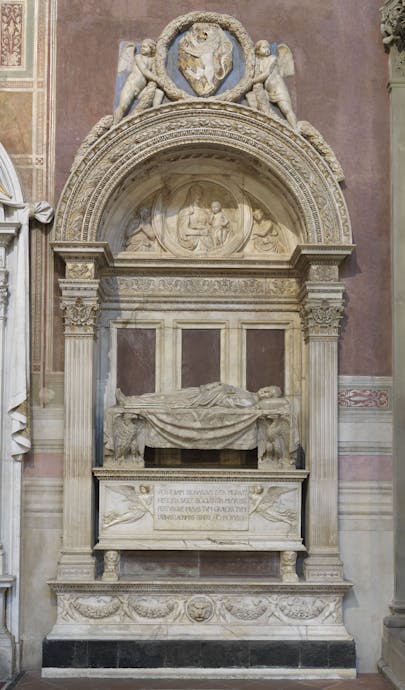
B
The Supper at Emmaus, painted by Santi di Tito in 1574, is in the basilica’s north aisle. It’s part of a set of large paintings strung out along the aisles, illustrating episodes from the lives of Jesus and the Apostles.
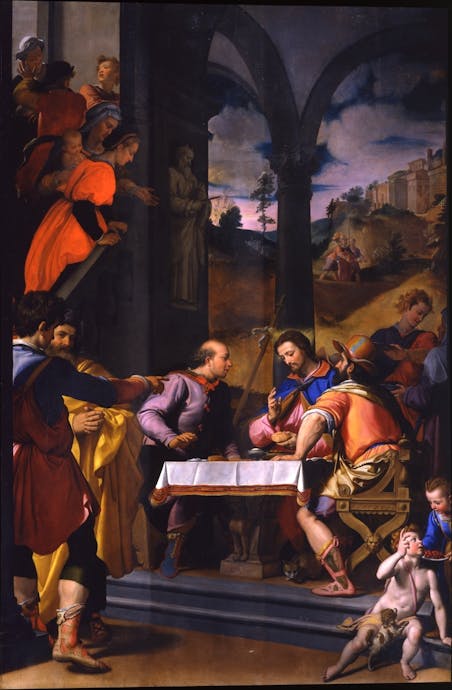
C
Giovanni di Leonardo Iacopi’s gravestone, carved by Florentine craftsmen between 1450 and 1460, is in the basilica’s south aisle. Gravestones differ from tombs because they’re on the floor, because they tend to be smooth or carved slabs of marble and because the graves they cover can hold one or more people. The fact that they’re on the floor is a mark of humility on the part of the person or people buried there, so walking over them isn’t a sign of disrespect.

D
The Monumental tomb of Luigi Lanzi, designed by Giuseppe Belli and sculpted by Onofrio Boni, was built between 1810 and 1812 and is located in the right aisle of the Basilica. Luigi Lanzi has published treatises on archaeology and philology, but he is particularly known for the fundamental contribution that he gave to the history of Italian art by developing a more modern approach to the subject: instead of focusing on the study of the individual biographies of the artists, as per tradition, Lanzi analyses their pictorial style to enable him to identify elements common to a specific historical period or a geographical motivation.
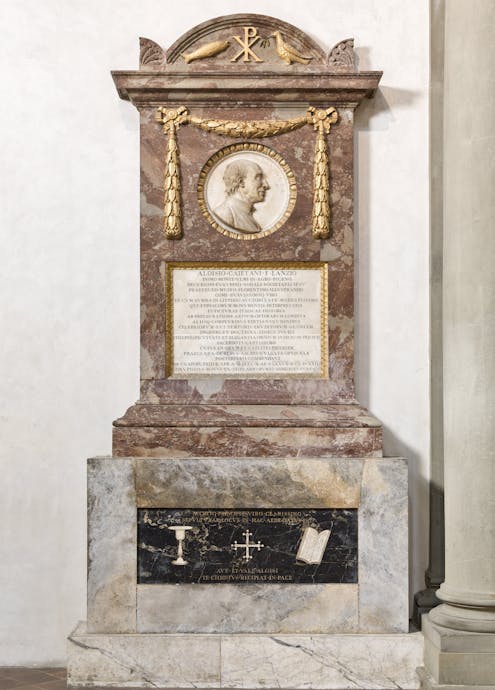
E
Paolo dal Pozzo Toscanelli and Amerigo Vespucci’s memorial, carved by Dario Guidotti and Raffaello Romanelli in 1898, is in the basilica’s north aisle. It commemorates the seafarers and explorers whose love of adventure prompted them to plough the seas in search of distant lands at a time when the world was still largely unknown.
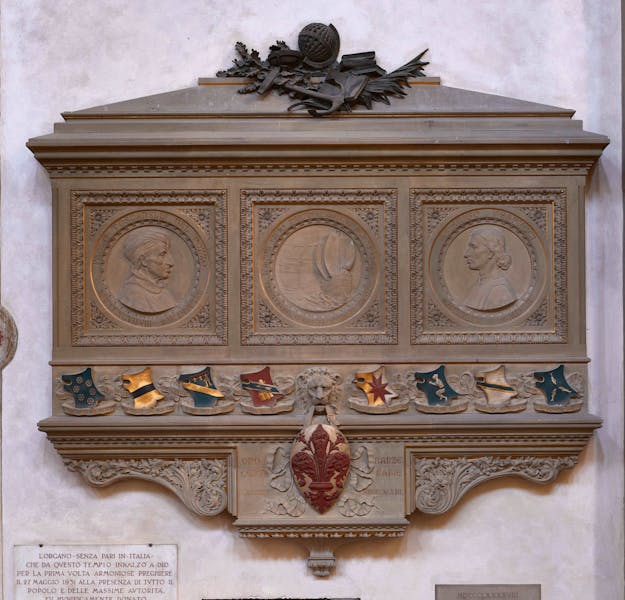
F
Carlo Marsuppini’s monumental tomb, carved by Desiderio da Settignano between 1454 and 1459, is in the basilica’s north aisle. Desiderio drew his inspiration from the tomb that Bernardo Rossellino had created for Leonardo Bruni just across the church in the opposite aisle, but his design was richer because he added a lot of symbolic elements that make the decoration far more detailed.
